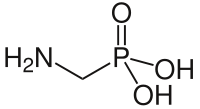
Chemical and Enzymatic Methods for Post-Translational Protein–Protein Conjugation
Sign Up to like & getrecommendations! Published in 2022 at "Journal of the American Chemical Society"
DOI: 10.1021/jacs.2c00129
Abstract: Fusion proteins play an essential role in the biosciences but suffer from several key limitations, including the requirement for N-to-C terminal ligation, incompatibility of constituent domains, incorrect folding, and loss of biological activity. This perspective… read more here.
Keywords: protein protein; post translational; enzymatic methods; chemical enzymatic ... See more keywords

Study the Effect of Chemical and Enzymatic Extraction Methods on the Kenaf Fibers Properties
Sign Up to like & getrecommendations! Published in 2020 at "Journal of Natural Fibers"
DOI: 10.1080/15440478.2020.1837327
Abstract: In this paper, two extraction methods for kenaf fiber, The chemical process and the enzymatic one, were performed. These processes were used to extract fibers from the kenaf stem and the chemical, ... read more here.
Keywords: extraction methods; effect chemical; chemical enzymatic; study effect ... See more keywords

Microwell Fluoride Screen for Chemical, Enzymatic, and Cellular Reactions Reveals Latent Microbial Defluorination Capacity for −CF3 Groups
Sign Up to like & getrecommendations! Published in 2022 at "Applied and Environmental Microbiology"
DOI: 10.1128/aem.00288-22
Abstract: Thousands of organofluorine chemicals are known, and a number are considered to be persistent and toxic environmental pollutants. Environmental bioremediation methods are avidly being sought, but few bacteria biodegrade fluorinated chemicals. ABSTRACT The capacity to… read more here.
Keywords: capacity; defluorination capacity; defluorination; chemical enzymatic ... See more keywords

Effect of chemical and enzymatic treatments of alfa fibers on polylactic acid bio-composites properties
Sign Up to like & getrecommendations! Published in 2020 at "Journal of Composite Materials"
DOI: 10.1177/0021998320941579
Abstract: Poor interfacial adhesion between vegetable fibers and bio-based thermoplastics is recognized as a serious drawback for biocomposite materials. To be applicable for a large-scale production, one should consider appropriate methods of natural fiber handling. This… read more here.
Keywords: treated fibers; alfa fibers; fiber; effect ... See more keywords

Degradation of Exopolysaccharides from Lactic Acid Bacteria by Thermal, Chemical, Enzymatic and Ultrasound Stresses
Sign Up to like & getrecommendations! Published in 2021 at "Foods"
DOI: 10.3390/foods10020396
Abstract: During isolation, exopolysaccharides (EPS) from lactic acid bacteria are subject of thermal, chemical, enzymatic or ultrasound stress of different intensity that may affect macromolecular properties, for instance molecular mass or (intrinsic) viscosity. These parameters are,… read more here.
Keywords: degradation; thermal chemical; enzymatic ultrasound; chemical enzymatic ... See more keywords

Chemical and Enzymatic Characterization of Leaves from Spanish Table Olive Cultivars
Sign Up to like & getrecommendations! Published in 2022 at "Foods"
DOI: 10.3390/foods11233879
Abstract: Olive leaves are generated as by-products in the olive industry and contain substances with biological properties that provide health benefits. Although these compounds have been characterized in many leaves from olive cultivars devoted to olive… read more here.
Keywords: enzymatic activities; polyphenol oxidase; phenolic content; olive cultivars ... See more keywords

Impact of Bis-O-dihydroferuloyl-1,4-butanediol Content on the Chemical, Enzymatic and Fungal Degradation Processes of Poly(3-hydroxybutyrate)
Sign Up to like & getrecommendations! Published in 2022 at "Polymers"
DOI: 10.3390/polym14081564
Abstract: Poly-β-hydroxybutyrate (PHB) is a very common bio-based and biocompatible polymer obtained from the fermentation of soil bacteria. Due to its important crystallinity, PHB is extremely brittle in nature, which results in poor mechanical properties with… read more here.
Keywords: dihydroferuloyl butanediol; bis dihydroferuloyl; chemical; chemical enzymatic ... See more keywords